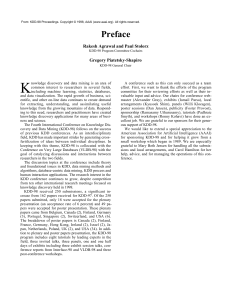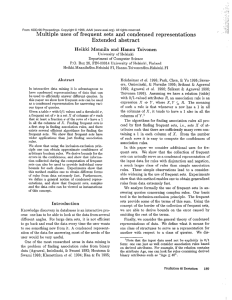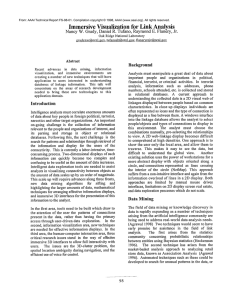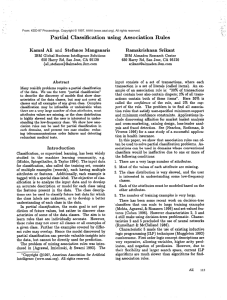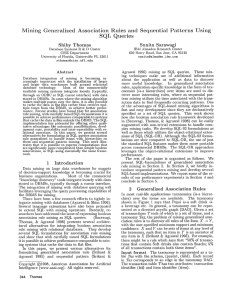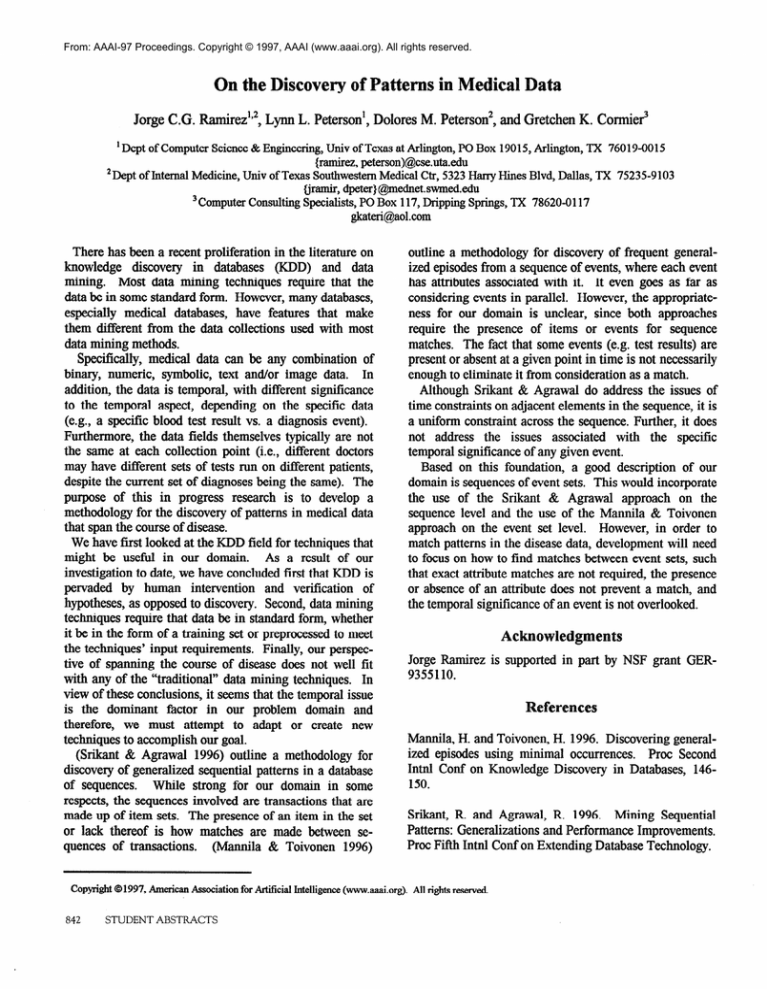
From: AAAI-97 Proceedings. Copyright © 1997, AAAI (www.aaai.org). All rights reserved.
On the Discovery of Patterns in Me
Jorge C.G. Ramirez1~2, Lynn L. Peterson’, Dolores M. Peterson’, and Gretchen K. Cormier3
’ Dept of Computer Science & Engineering, Univ of Texas at Arlington, PO Box 190 15, Arliugton, TX 760 19-00 15
(ramirez, peterson)@cse.uta.edu
2Dept of Inkrnal Medicine, Univ of Texas Southwestern Medical Ctr, 5323 Harry Hines Blvd, Dallas, TX 75235-9103
Qrarnir, dpekr)@mednetswrned.edu
3Computer Consulting Specialists, PO Box 117, Dripping Springs, TX 78620-0117
gkakri@aol.com
There has been a recent proliferation in the literature on
knowledge discovery in databases (KDD) and data
mining. Most data mining techniques require that the
data be in some standard form. However, many databases,
especially medical databases, have features that make
them different from the data collections used with most
data mining methods.
Specifically, medical data can be any combination of
binary, numeric, symbolic, text and/or image data. In
addition, the data is temporal, with different significance
to the temporal aspect, depending on the specific data
(e.g., a spdfic blood test result vs. a diagnosis event).
Furthermore, the data fields themselves typically are not
the same at each collection point (i.e., different doctors
may have different sets of tests run on different patients,
despite the current set of diagnoses being the same). The
purpose of this in progress research is to develop a
methodology for the discovery of patterns in medical data
that span the course of disease.
We have first looked at the KDD field for techniques that
might be useful in our domain. As a result of our
investigation to date, we have concluded first that KDD is
pervaded by human intervention and verification of
hypotheses, as opposed to discovery. Second, data mining
techniques require that data be in standard form, whether
it be in the form of a training set or preprocessed to meet
the techniques’ input requirements. Finally, our perspective of spanning the course of disease does not well fit
with any of the “traditional” data mining techniques. In
view of these conclusions, it seems that the temporal issue
is the dominant factor in our problem domain and
therefore, we must attempt to adapt or create new
techniques to accomplish our goal.
(Srikant 2%Agrawal 1996) outline a methodology for
discovery of generalized sequential patterns in a database
of sequences. While strong for our domain in some
respects, the sequences involved are transactions that are
made up of item sets. The presence of an item in the set
or lack thereof is how matches are made between sequences of transactions.
(Mannila & Toivonen 1996)
Copyright 01997,
842
outline a methodology for discovery of frequent generalized episodes from a sequence of events, where each event
has attributes associated with it. It even goes as far as
considering events in parallel. However, the appropriateness for our domain is unclear, since both approaches
require the presence of items or events for sequence
matches. The fact that some events (e.g. test results) are
present or absent at a given point in time is not necessarily
enough to eliminate it from consideration as a match.
Although Srikant & Agrawal do address the issues of
time constraints on adjacent elements in the sequence, it is
a dorm
constraint across the sequence. Further, it does
not address the issues associated with the specific
temporal significance of any given event.
Based on this foundation, a good description of our
domain is sequences of event sets. This would incorporate
the use of the Srikant & Agrawal approach on the
sequence level and the use of the Mannila 8i Toivonen
approach on the event set level. However, in order to
match patterns in the disease data, development will need
to focus on how to find matches between event sets, such
that exact attribute matches are not required, the presence
or absence of an attribute does not prevent a match, and
the temporal significance of an event is not overlooked.
Jorge Ramirez is supported in part by NSF grant GER9355 110.
eferences
Mannila, H. and Toivonen, H. 1996. Discovering generalized episodes using minimal occurrences. Proc Second
Intnl Conf on Knowledge Discovery in Databases, 146150.
Srikant, R. and Agrawal, R 1996. Mining Sequential
Patterns: Generalizations and Performance Improvements.
Proc Fifth Intnl Confon Extending Database Technology.
American Association for Artificial Intelligence(www.aaai.org). All rights reserved.
STUDENT ABSTRACTS


